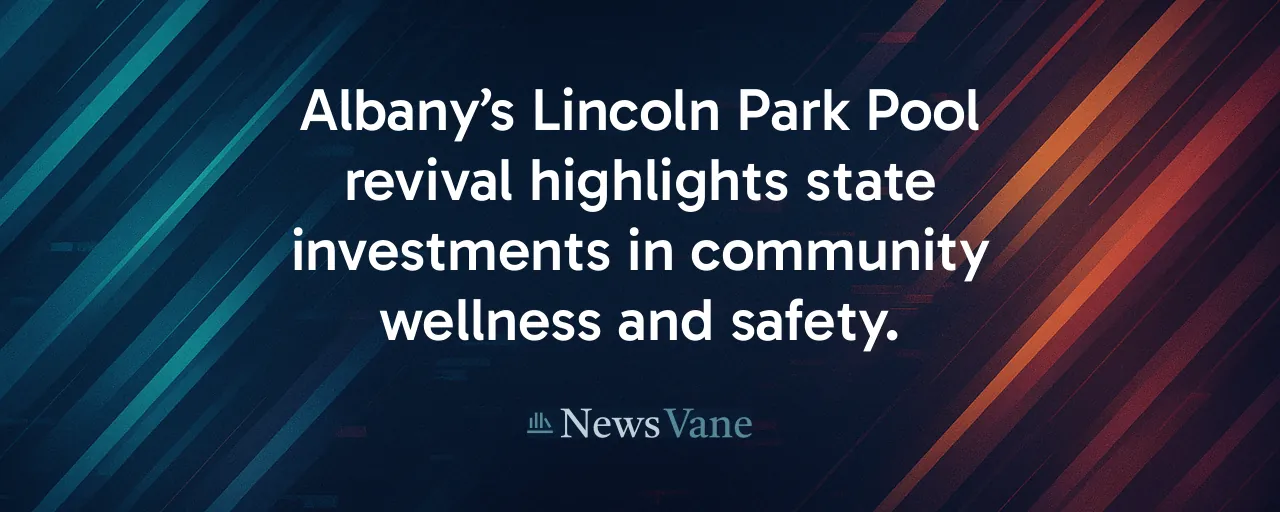A Splash of Renewal in Albany
Albany's South End buzzed with excitement on July 3, 2025, as families gathered for the grand reopening of the Lincoln Park Pool. Closed for years, the historic facility gleamed with new life, thanks to a $25 million overhaul. A zero-entry pool, splash pad, and half Olympic-style lap pool now welcome swimmers of all ages and abilities. The project, backed by $10 million from New York's Statewide Investment in More Swimming (NY SWIMS) initiative, aims to restore a community cornerstone while addressing broader needs like heat relief and water safety.
The ribbon-cutting signifies a statewide push to revive public pools, especially in underserved neighborhoods. NY SWIMS, launched in 2024 with $150 million for 37 projects, draws comparisons to New Deal-era investments. With another $90 million allocated for 2025, the program reflects a commitment to recreation as a public good. As Albany celebrates, questions linger about balancing such ambitious investments with long-term fiscal realities.
Why Pools Matter Now
Public pools offer a place to cool off and address pressing health and social challenges. Drowning remains the leading cause of death for children ages one to four, with access to swim lessons proven to reduce risks. Studies also link recreational spending to lower mortality rates, as active communities tend to thrive. In Albany, the upgraded Lincoln Park Pool will host learn-to-swim programs, targeting disparities in water safety skills.
Rising temperatures add urgency. Heat waves, increasingly common in New York, hit urban areas hardest, where low-income residents often lack air conditioning. Pools like Lincoln Park serve as cooling centers, potentially cutting heat-related illnesses. Beyond physical health, these spaces foster social bonds, offering youth a break from screens. The state's 'Get Offline, Get Outside' campaign ties pools to broader wellness goals, emphasizing outdoor activity as a counter to digital overload.
The Price of Public Good
While the benefits are clear, the costs spark debate. Public pools rarely break even, with industry data showing cost recovery between 30 and 60 percent. Operating expenses, from energy to lifeguard wages, often outpace municipal budgets. In Albany, $50,000 in NY SWIMS lifeguard grants will help, but staffing shortages and rising wages remain hurdles. Taxpayers, who fund these projects, question whether recreational facilities should compete with priorities like schools or public safety.
Historical trends add context. New York's 1936 WPA pools set a high bar for public recreation, but mid-20th-century disinvestment left many facilities neglected. NY SWIMS aims to reverse this decline; critics warn of future maintenance burdens. A 1980-2010 study found that every $100 per capita in recreation spending saved lives, but fiscal watchdogs stress accountability. Transparent budgets and performance metrics could ensure funds deliver lasting value.
Balancing Access and Accountability
The Lincoln Park project highlights a broader tension: how to expand access while managing costs. Advocates argue that pools are essential infrastructure, correcting decades of inequity in underserved areas. South End residents, long without a modern facility, now have a space that meets ADA standards and supports community health. Environmental upgrades, like a $5 million sewer improvement grant, also reduce Hudson River pollution, aligning with climate goals.
Fiscal concerns also demand practical solutions. Sliding-scale user fees, which exempt low-income families but charge others modestly, could offset deficits. Energy-efficient designs, like those in Lincoln Park's new systems, lower long-term costs. Public-private partnerships, where nonprofits or businesses share management, offer another path to sustainability. These strategies aim to preserve public access while easing taxpayer burdens.
A Model for the Future
Albany's success could inspire other communities. NY SWIMS has bipartisan support, reflecting agreement on the value of safe, accessible recreation. State agencies, from the Department of Environmental Conservation to the Office of Parks, coordinate to maximize impact. Local leaders, like Albany's mayor, praise the project as a step toward reversing historic disinvestment. The pool's modern features, from splash pads to lifeguard training, set a standard for what public investment can achieve.
Challenges remain. Securing lifeguards, maintaining facilities, and proving cost-effectiveness will test the program's longevity. Communities across New York watch closely, hoping to replicate Albany's model. Balancing health, equity, and fiscal responsibility will allow NY SWIMS to redefine how states invest in public spaces.
As families dive into Lincoln Park Pool this summer, they are swimming and participating in a broader experiment in building stronger, healthier communities. The ripples of this investment could shape New York's approach to public recreation for decades, proving that well-planned public spaces can unite and uplift.
